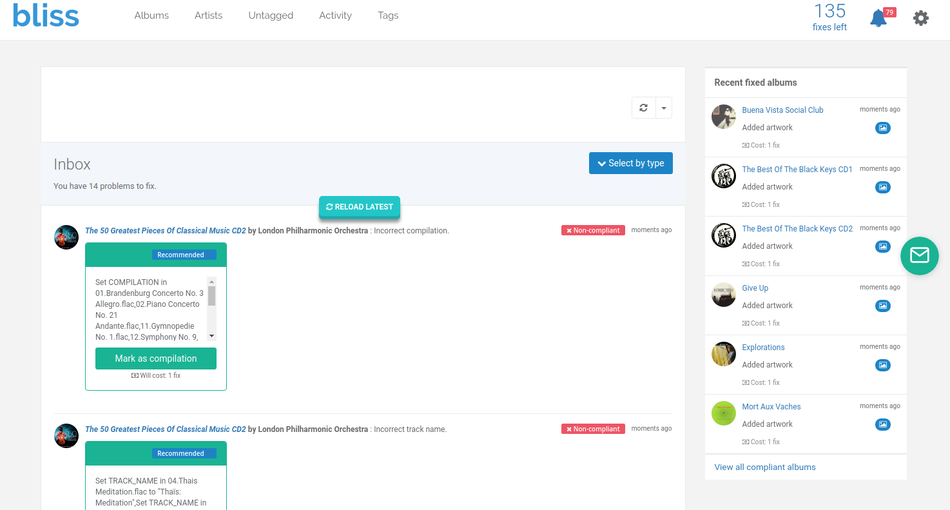Assessment of cover art and automatic installation
Now you have applied the rules you will automatically be transfered to the Inbox page. You'll see that bliss is assessing each album against the rule and, potentially, automatically fixing what it can.

On the right, bliss will show you Recent fixed albums. These are the albums for which bliss successfully installed cover art. It will also show you how much each assessment cost (in terms of fixes) and the approximate time the fix was applied. The View all compliant albums link at the bottom of this box will lead you to the Album tab in bliss, so you can see all albums with artwork, whether bliss fixed them or not.
On the left, bliss will present all outstanding problems - albums for which there wasn't enough data to retrieve the correct album art automatically.
So what's happening during assessment? We configured two rules - save the art into an image file with a configured name and make sure art is embedded. If either the image file or the embedded art is missing, bliss decides on an automatic fix to (in order): (1) re-apply any existing art (for instance if the embedded art exists but the image file doesn't: save the embedded art into the image file) or (2) download art from the Web. The fix is run (this costs one 'fix' in terms of licensing, per album) and hopefully the album is now 'Compliant'. If there was no art to re-apply and there was no art found on the Web from trusted sources then the album will remain 'Non-compliant' and you should choose your own cover art from a wider range of possibilities (we'll come to that later!).
The assessment/fix cycle runs for all albums on initial startup, and then whenever an album is either changed or added.
How long does it take? It depends on the rules. For instance, for the cover art rule there are two main sources of slowness: (1) embedding art tends to take a long time, depending on the speed of your hard disc or network if mounted and (2) performing Web lookups are throttled to avoid excessive calls to online music databases. Generally, on my home server I see about one album scanned per second on average, but this is not necessarily a representative sample!